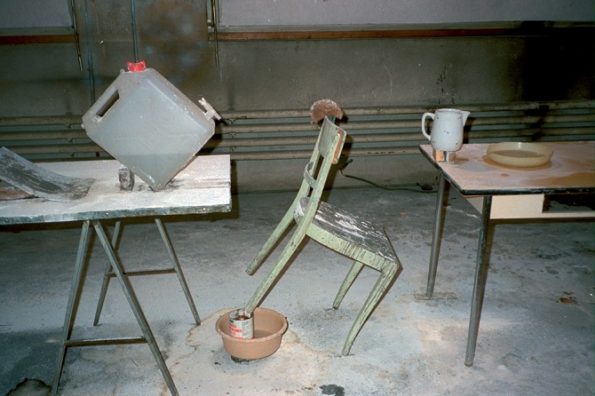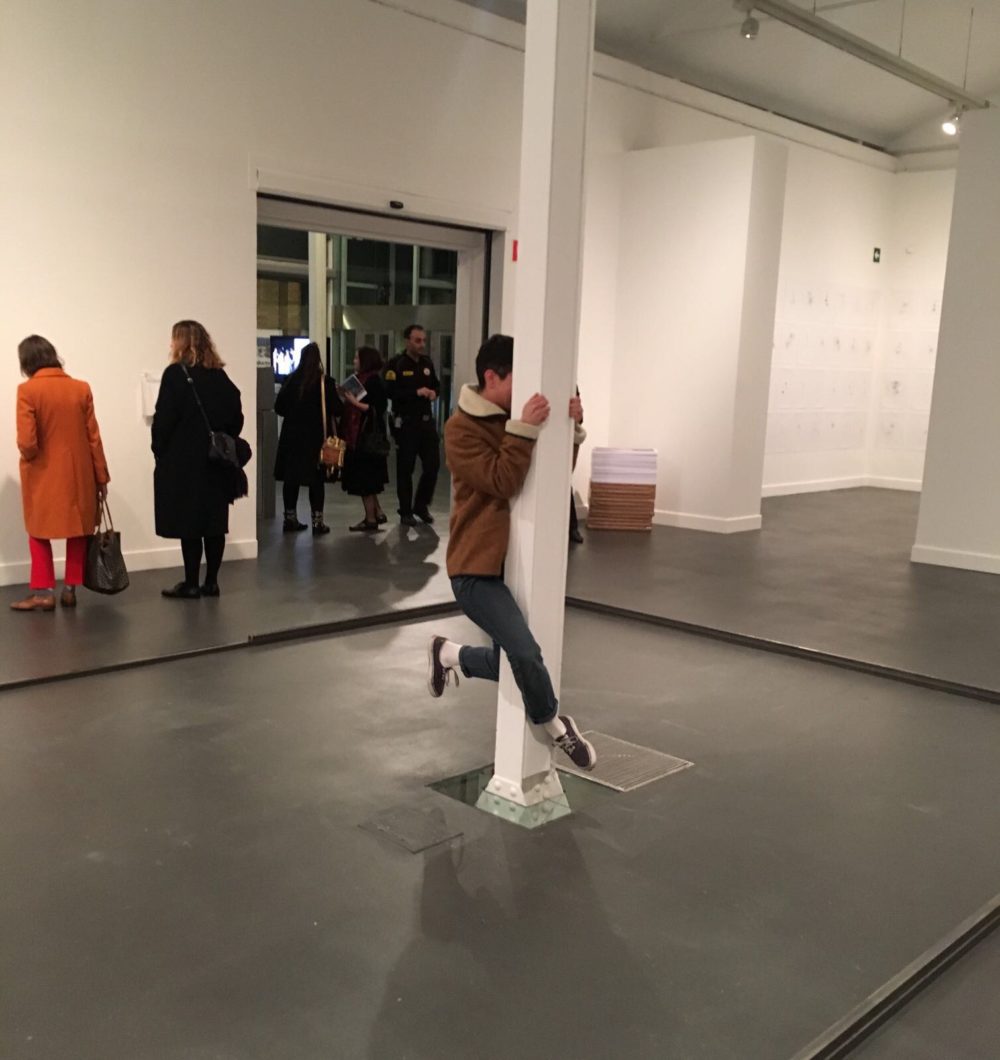Search
To search for an exact match, type the word or phrase you want in quotation marks.
A*DESK has been offering since 2002 contents about criticism and contemporary art. A*DESK has become consolidated thanks to all those who have believed in the project, all those who have followed us, debating, participating and collaborating. Many people have collaborated with A*DESK, and continue to do so. Their efforts, knowledge and belief in the project are what make it grow internationally. At A*DESK we have also generated work for over one hundred professionals in culture, from small collaborations with reviews and classes, to more prolonged and intense collaborations.
At A*DESK we believe in the need for free and universal access to culture and knowledge. We want to carry on being independent, remaining open to more ideas and opinions. If you believe in A*DESK, we need your backing to be able to continue. You can now participate in the project by supporting it. You can choose how much you want to contribute to the project.
You can decide how much you want to bring to the project.

In one of his texts Raimundas Malasauskas comments on how works of art are perhaps the only full-time curators he knows. They are what provoke the decisions that others make (for them) so that their stories can be told. Amongst the multiple effects of works of art are the discussions we have about them or as a result of them, the different meanings they produce, or even the discourses that are forgotten, or the relations between people they facilitate, demand, or impose. Bearing this in mind could we state that it’s the works of art that determine the curatorial practice that accompanies them? Could we also state the opposite? Does the curatorial practice pursue some form of emancipation with respect to the works of art to which they supposedly owe their raison d’être? What’s more, is a curatorial practice without works of art possible? In the affirmative, does curating suppose an independent force field, contrary to the interests of the works of art or artists? Is this legitimate?
Returning to Raimundas’ text, he explains how this conclusion derives from a speculative exercise that he initiated with Mathieu Copeland: the possibility of making an exhibition curated by an object: for example, a table. An element both reject for the privileged status of the table as a favourite object within the new philosophical currents around objectuality and the material. The chain of possibilities augments when Francesco Manacorda proposes an exhibition curated by “two parrots, six chocolate cakes, a bowl of sea water, two cans of warm Guinness, a potted geranium, and Maria Lind”. What could seem like just an ingenious joke opens up a new possibility: that of understanding the collective through the decentralisation of the subject that enables a combination between human and non-human elements. When all is said and done, what Manacorda suggests is a collectively curated exhibition. It just so happens that the voices are others and are not obliged to have a mouth.
The curator is frequently presented as the one who gives a voice to works of art. An agent, who makes them talk within a specific scenario, one in accord with a chain of possible meanings. The problem that arises here is ventriloquism: when talking in the name of others, we run the risk of silencing them. This assimilation between curatorial practice and ventriloquism was something that appeared in the first exhibition he realised. The problem didn’t arise with me, even though it addressed me specifically. It was with Jaume Ferrete, with a specific project in that exhibition: who threw (at me) the question about the voice of the curator, its construction within the context, its effects, and consequences. Not regarding what we say, so much as how we say it, from where we do so, and whom we address. The frequent association between curatorial work and discourse would add another problem to the list: the masculine character – from the plane to the symbolic, but with specific effects in our subjectivity – from an extensive curatorial paradigm strongly tied to a tradition of logo-centric thinking which privileges the word and abstract thinking over everything else. Something which also affects the context of art, a space which apparently presents itself as the place of privileged annunciations on things, or rather about specific things: works of art. Since that project, I still keep asking myself- as a curator, but not just as that- if I’ve located myself within a symbolic masculine order. How, in the event of an affirmative, would it be possible to counteract this without touching on etymological clichés that associate curating with caring, and hence to a practice associated traditionally with the feminine. Or how working with discourse from a notion of authorship, freed from the processes of authority, distanced from the abstract individuality of the investigator, doesn’t contemplate the material and subjective determinants that affect our modes of thinking and our ways of life and work.
“My” first exhibition was, as in the case of so many curators when they begin, a collective exhibition. A standard format, which just like the white cube or vitrines, operates by way of a neutrality of a medium that is not neutral so much as we’ve naturalised it. “Collective” is a word we don’t read according to the potential of its meaning so much as by a pragmatism of classifications. Here a collective exhibition is not an exhibition that includes collectivity amongst its priorities or reflections. It’s “simply” an exhibition in which various artists participate. And what happens with the works of art? Do they participate in this naturalised collectivity of the medium? What does it mean for them to participate? To share their presence within the same place? Where are the grades of intensity or implication that differentiate the ways of being in a place that is not so much a space as an invisible time of production?
The collective tends to be thought by way of the subjective, as a group of people that is united to carry out a proposition jointly. Collectivity is anthropocentric and doesn’t include a material dimension of the world. Otherwise, an exhibition of a single artist with various works or artistic projects would also be a collective exhibition. Collectivity is reductionist and appeals to a self-conscious volition. Otherwise, various projects surrounding a common issue or interrelated questions, made by people, objects, or materials that haven’t maintained a direct relation could also be a collective project. One capable of indicating forms of expanded, unconscious, or involuntary collectivity, although not for this less effective. This latter idea is something that appears in a conversation with Alexandra Laudo, putting aside the negative conceptions with which we usually understand trends, particularly within contemporary art. As if we didn’t participate in this situation that is as habitual as it is extraordinary, in which for a while the focus of attention is concentrated on specific places from different positions or points of view that in a more or less brief period of time are replaced by others.
In this same conversation the notion of unconscious community arises. At the time I thought about the relation people far removed from each other can have through the same object produced in series. By acquiring and integrating it into their experience of the world, for example. The object as a system of relations, one in which we participate without realising it. Shifting this situation to the field of art could we imagine a historiography that is yet to be made: that of works of art in relation to the exhibitions in which they have participated or the types of curating through which they have circulated. To think about the chain of meanings different curators have granted the same work of art and how these are not born from nothing, so much as participate in a community of active thinking, disseminated in a specific moment in history, even though it is a history we ourselves have imposed on the actual objects. Recouping the initial idea of Raimundas Malasauskas, it wouldn’t consist in converting the works of art into curators of an exhibition, so much as into curators of their own biography. To understand them as a system of relations, one in which diverse elements participate that transcend the figure of the artist or the curator, so as to include discourses, affects, institutions, displays, territories, live audiences, and deferred audiences. There would also be the possibility to limit ourselves to one of the elements in this chain and think about the work of art as a concentrated curatorial collectivity, juxtaposed through the material, a collectivity that works conjointly thanks to its interest in the same object over the length of time.

artwriter_curator_esnorquelmaker_chocolateresearcher_technodancer__bikeenthusiast_coffeeaddicted_
"A desk is a dangerous place from which to watch the world" (John Le Carré)